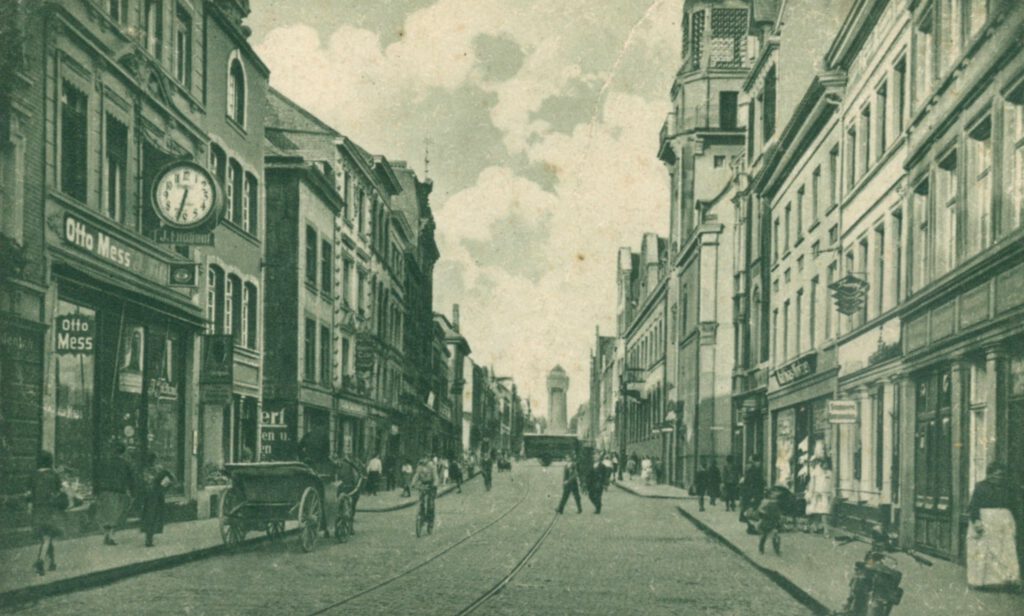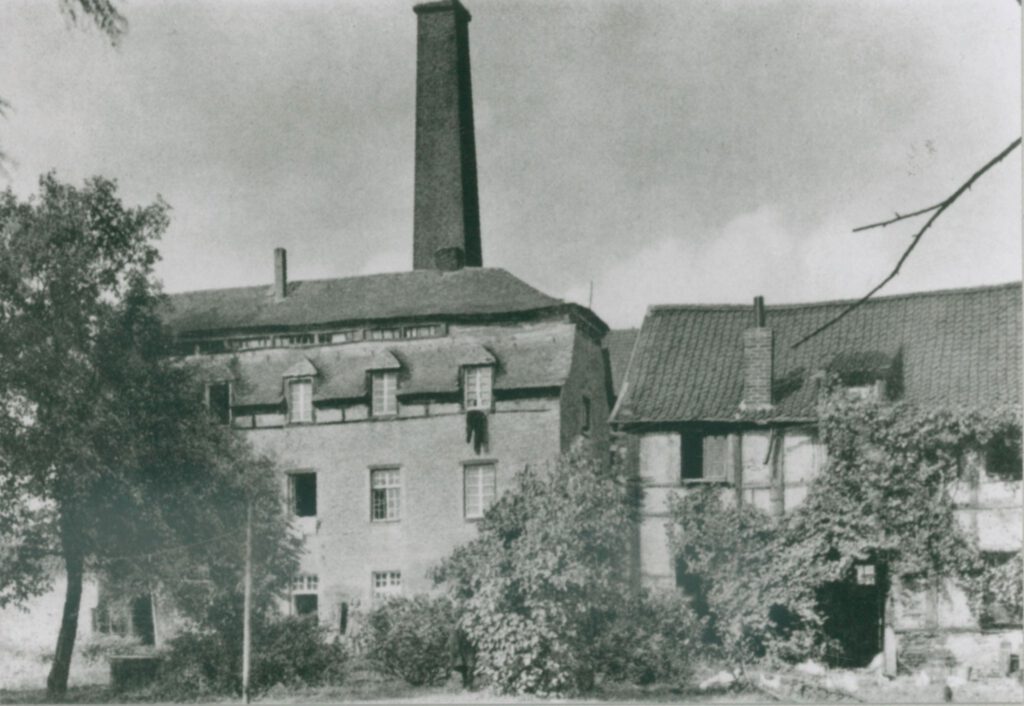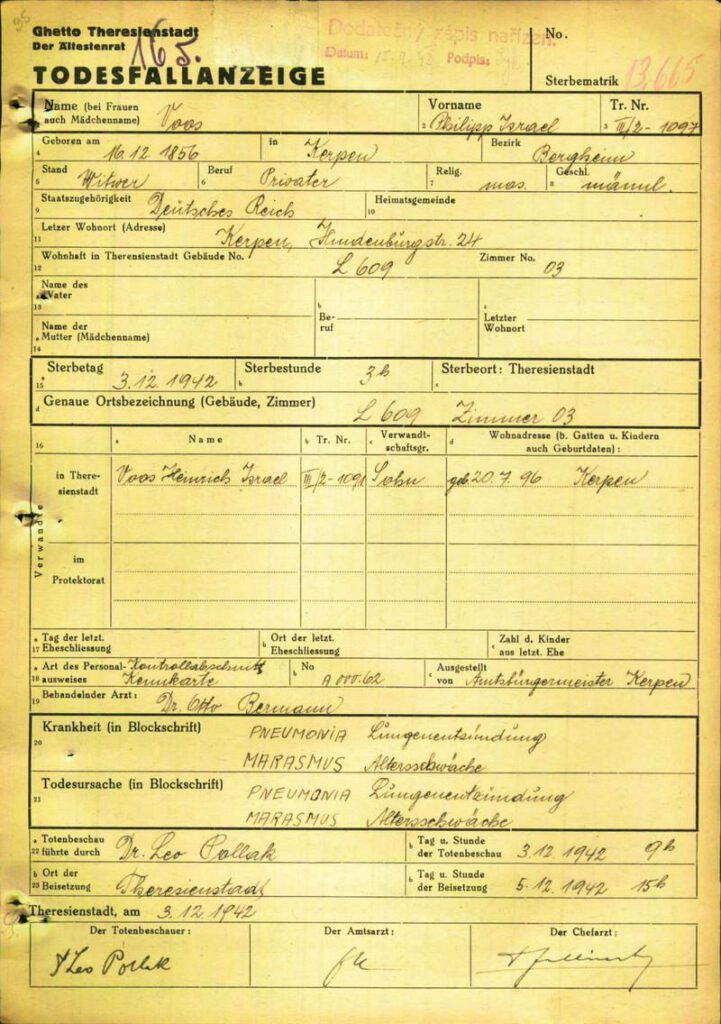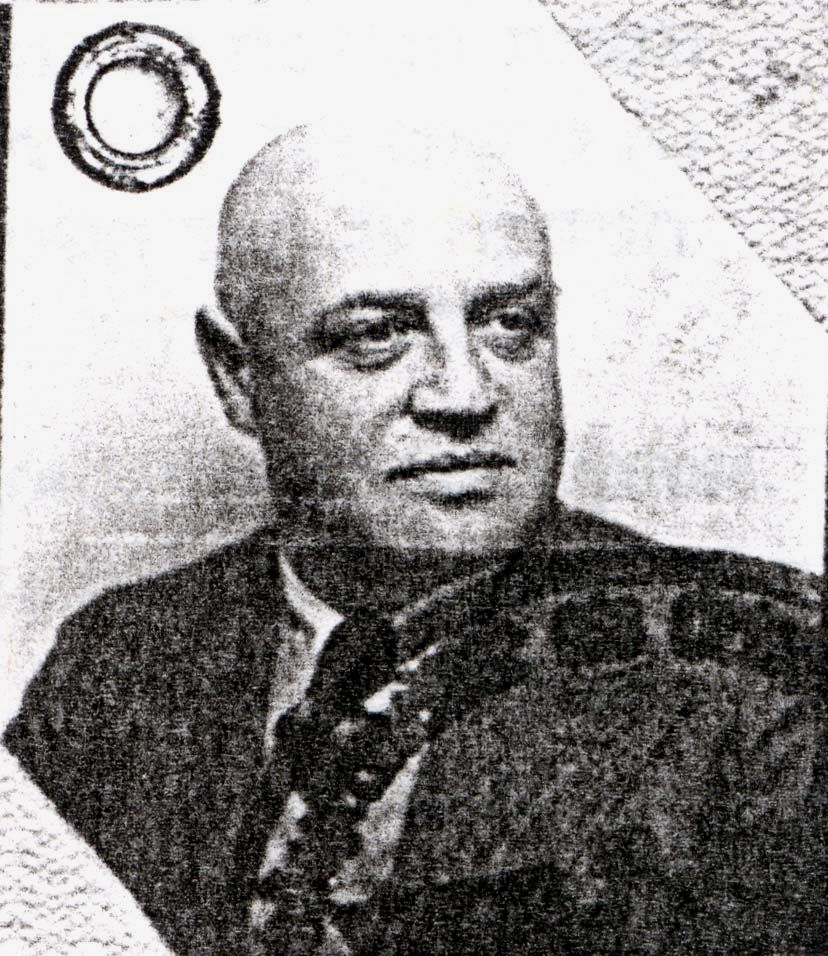Born on 14 August 1907 in Düren
Deported to Riga/Jungfernhof on 1 December 1941 and murdered
Interned in Weißenstein during November 1941
In December 1905, the town of Düren in the Rhineland had 29.771 inhabitants, 268 of whom belonged to the Israelite faith, including the Capell family. Hermann Heymann Capell was the first bearer of this name to settle in Düren. He was born in Jülich in 1778 and is the great-grandfather of Hermann Capell, whose life is described here. The Capells, as far as one can assume from a founding family, belonged to the old-established in the town.
Hermann Capell was born on 14 August 1907 into a world that was still quite intact for Jewish Germans, even though hatred of Jews was already being spread in writing and speech at that time. The Jewish people of Düren were often merchants, there was also a doctor among them, and in the communities of the surrounding countryside there were a few Jewish cattle dealers. Hermann’s parents were Josef Capell, born in 1880, and his wife Amalie, née Voos (sometimes spelled ‘Voss’), who was born in 1888 and came from Kerpen. The couple had been married since 1906, and the Capells’ property, the inner-city house Kölnstrasse 72, had been in the Capell family since 1900.

Hermann’s father Josef Capell had seven brothers and sisters, and it is typical of the change of generations that Josef himself had only two children: in addition to Hermann, his daughter Lieselotte, who was not born until 1919. The only record of Hermann’s childhood and youth is that he successfully completed his studies at the Protestant ‘Realgymnasium mit Realschule’ in Düren in 1926. Based on the length of stay, one can assume that he achieved a Gymnasium degree.
It is not known what Hermann Capell’s life was like in the 10 years after he left school. The business registrations of the city of Düren show that Hermann Capell registered a ‘paper goods wholesaler’ in his parents’ house on 23 October 1934. He continued the business of his father, who had been the owner of the ‘Papiergroßhandels Gebr. Capell’ since 1912. Since Düren was a centre of paper production, the choice of the location was obvious. However, it remains an open question whether Hermann Capell would have preferred to choose an academic profession, which was later denied him by the Nazi decrees. On 31 August 1936, his father Josef Capell died, only 56 years old. A few years earlier, in March 1931, Josef had also founded a grain and feed store in the house. It is somewhat surprising that his daughter Lieselotte, who was only 12 years old, was registered as co-owner.
With the beginning of the Nazi dictatorship, Jewish Germans in Düren also suffered exclusion, humiliation and potential violence. The culmination was the pogrom night of 9 to 10 November 1938, when the synagogue in Düren was also set on fire by Nazi gangs, the Jewish inhabitants were terrorised and as a result they had to give up their businesses or sell them for less than their value. 26 Jewish men from Düren were subsequently taken to the Sachsenhausen and Buchenwald concentration camps and interned there. It could not be clarified whether Hermann Capell was among them. Shortly afterwards, when it was impossible for him to continue his paper wholesale business, Hermann Capell probably left his home town and moved to Stuttgart.
Contents [hide]
Hermann Capell in Stuttgart
Hermann’s stay in Stuttgart can only be proven indirectly, because his name does not appear in any of the address books from 1938 to 1941. However, the Stuttgart city archive has so-called ‘Judenlisten’ (lists of Jews) which the Nazi administration had compiled. These show that Hermann Capell lived at the following addresses: Johannisstr. 51, 2nd floor, January 1939. Exactly there, in the address book of 1938, the names of four ‘Jewish’ tenants can be found, including ‘Strauß J. + Sohn, Woll- Fell- und Rauchwarengroßhandlung’. Had Hermann Capell found employment there as a merchant for a short time?
The ‘Judenliste’ of mid-October 1939 already shows a different address: ‘Capell, Hermann Israel, commercial employee, Urbanstr. 116, Eg’. Of the 13 tenants of this house, six can be identified as ‘Jewish’ in the 1940 address book, and Willi Israel Stern, a merchant who had to work as an unskilled labourer, is registered for the ground floor. Did Hermann Capell live in his flat?
Hermann could not stay long in Urbanstraße either, the ‘Judenliste’ from the end of December 1940 shows Werastr. 16, 2nd floor as his new address. The house belonged to the Jewish Lieblich family and according to the address book of 1941, 10 out of 12 residential entries were ‘Jewish’. The ‘Jewish house’ Werastr. 16 can also be found on the document of 24.10.1941, on which 42 Jewish Stuttgart residents were listed who were to be taken to the forced residential home Schloss Weißenstein, among them Hermann Capell – although only he came from Werastr. 16.
Interned in the forced residence Schloss Weißenstein, murdered in Latvia
He was only 34 years old, a man and a non-Swabian, but he was an exception among the other internees. He was probably one of those who could actively assist the caretaker couple Falk – after all, the individual stoves had to be supplied with wood and coal in the beginning of winter. Hermann Capell’s stay in Weißenstein Castle was short-lived, as he was already taken to Stuttgart / Killesberg camp at the end of November 1941 together with 16 other castle residents and deported to Riga/Jungfernhof camp on 1 December 1941. Here Hermann Capell was murdered by the German Nazis or their Latvian auxiliaries. Whether he froze to death in the winter of 1941 / 42 or was shot in the Bikernieki forest in March 1942 is not known.
The fate of Lieselotte and Hans Claeßen
While Hermann lived in Stuttgart, his sister Lieselotte, who had learned the profession of a ‘nanny’, married Hans Claeßen, a merchant from Emmerich who was 15 years older. The wedding took place on 8 November 1940 in Düren, and the couple settled in Cologne, Spichernstr. 34. From Cologne they were taken to the Litzmannstadt (Lodz) concentration camp on 30 October 1941, where they were housed at Bleigasse 26 and presumably had to perform forced labour for years, hoping that their labour would guarantee their survival. On the deportation list to Litzmannstadt (facsimile?)Hans is described as a ‘worker’, Lieselotte as a ‘caretaker’. In the course of the gradual dissolution of the ghetto in June 1944, the couple was deported to the Kulmhof (Chelmo) extermination camp and murdered there.
In Emmerich, in front of the house at Fischerort 8, where the Claeßen family ran a textile shop, there are Stolpersteine. They commemorate Hans, his mother Helene, née Levy, and his sister Gertrud, who were all murdered by the Nazis. Since Lieselotte Claeßen, née Capell had never lived in Emmerich, no memorial stone could be laid there for her either. (For the information on Emmerich we thank the ‘Schürmann – Archiv Emmerich am Rhein’.)
‘Missing’: Hermann’s mother Amalie
After Hermann and Lieselotte left, the widowed Amalie Capell lived alone in Düren. How long could she stay in the familiar flat at Kölnstr. 72? A decisive date will have been 13 December 1940: On that day, the house and property were sold at public auction: that is, Amalie Capell had previously been forced to sell.

(Source: City Archive Düren)
Could she continue to live in the house? At the end of April 1941, a forced residence for the remaining Jews in Düren was set up in the old Gerstenmühle.

The uprooted Jews were only allowed to take a few pieces of furniture with them. According to a document from 1952, Amalie was also interned in the Gerstenmühle, then deported ‘to the East’ in 1942. When and where to could not be clarified. Most of the Jews from Düren were taken to the Theresienstadt ghetto concentration camp in June 1942, but apparently not Amalie Capell. Unfortunately, it must be assumed that she was also murdered by the German Nazis.
Other murdered persons from Hermann Capell’s relatives
On his mother’s side, the Voos family
Hermann’s grandfather, Philipp Voos, born in 1856, lived in Kerpen as a widower. The old man was deported from Cologne to the concentration camp Theresienstadt on 27 July 1942, where he died on 3 December 1942, a few days before his 86th birthday, due to the murderous living conditions.

Nathan Baum, born in 1883, was the widower of Hermann’s aunt Sophia, née Voos, his mother’s younger sister. Mr Baum, who had worked as a cattle dealer, was deported from Cologne to Minsk on 20 July 1942 and murdered in Maly Trostinec.

After the early death of his wife Elise, née Wallich (Hermann’s grandm0other), Philipp Voos had married Jeanette Julie Cohen in second marriage and had four children with her. People from this branch of the family were also murdered by the Nazi regime:
Hermann’s (half-) aunt Paula was also deported to Minsk on 20 July 1942 together with her husband Hermann Kaufmann; their lives ended in Maly Trostinec.
Paula’s youngest brother, Heinrich (Heinz) Voos, born in 1896, who had remained single, was taken to the Theresienstadt ghetto concentration camp in 1942. Hermann Capell’s (half) uncle was deported from there to the Auschwitz extermination camp in September 1944.
On his father’s side, the Capell family
Hermann’s eldest aunt Rosalie, born in 1873, lived in Dortmund with her (second) husband Sally (Salomon) Abrams. The couple was first taken to the Theresienstadt ghetto concentration camp in July 1942 and murdered in the Auschwitz extermination camp in May 1944. Their daughter Herta (a cousin of Hermann) must have managed to escape, because in the 1990s she filled out Yad Vashem memorial sheets for her murdered relatives.
Bertha (Berta) Capell, born in 1882, was Hermann’s youngest aunt. The unmarried woman, who had remained in Düren, fled to her death on 25 April 1941 when she was threatened with incarceration in the Gerstenmühle forced labour camp.
The fate of Ludwig (Louis) Capell, born in 1885, Hermann’s youngest uncle, remains unknown. In 1953, the International Tracing Service in Arolsen could only provide the following information: ‘Deported from Düren to unknown in 1942’.
(20.03.2023 kmr)

